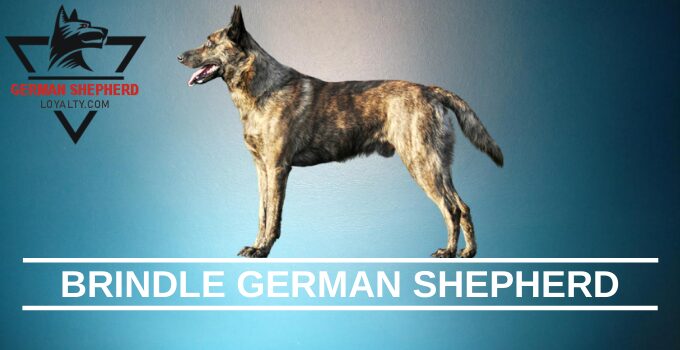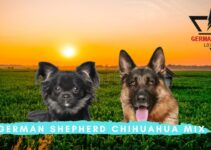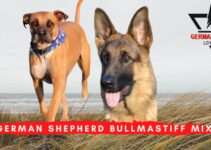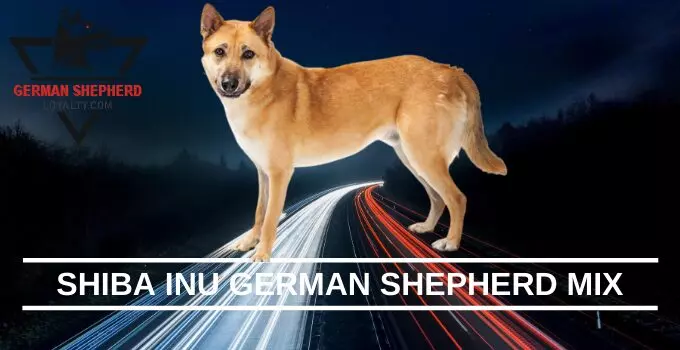Brindle German Shepherds are pet dogs of numerous colors. Currently, GSDs have eleven canine kennel club-accepted coat colors. Pure white, solid blue, merle, and brindle are layer colors that some consider faults and also, unfortunately, are gradually involving extinction. This post will certainly concentrate on Brindle-Colored German Shepherds, how the shade was attained, its history, where they can be located, and also why do we have fewer sightings of this layer color scheme.
Table could not be displayed.The subject of the brindle layer color pattern in German Shepherd pet dogs is just one of the intense arguments as well as disputes.
Part of the factor for the conflict results from existing shade fads and also the close association between the brindle coloration and pit bulls, as Copper’s Dream Rescue charity explains.
The various other parts of the factor are just that brindle is a non-standard color for the GSD. Still another part of the factor is that the brindle gene itself is considered as unpredictable genetically.
In this short article, we will certainly take a detailed take a look at the brindle German Shepherd and also share the latest info concerning this unusual layer color.
Contents
German Shepherd Brindle

The term brindle describes a specific layer pattern or shade comprised of alternating stripes.
Brindle is often referred to as “tiger red stripes” although the specific pattern can look very various depending upon the genetics of each pet– to the point where you may also assume two brindle coated pet dogs have two completely various layer patterns.
A Brindle German Shepherd is constantly most likely to be a rarity among traditional GSD dog breeders. This coat pattern is not even listed in the American Kennel Club (AKC) main breed basic signed up with the AKC by the German Shepherd Dog Club of America.
See a Brindle German Shepherd
Due To The Fact That German Shepherds with the brindle layer color are so uncommon, it is unusual to also locate a video clip of a true full-blooded Brindle GSD.
Nevertheless, the brindle layer shade is very usual on a similar-looking pure-blooded pet breed called the Dutch Shepherd.
In this brief, pleasant owner-made YouTube video, you can see the unusual and gorgeous Brindle layer shade on a German Shepherd mix canine.
What Creates the Brindle Color Pattern?
Earlier right here we pointed out that the brindle layer pattern on one pet dog might look completely various from the brindle layer pattern on another dog.
This is since creating the brindle coat pattern calls for a rather intricate hereditary process.
It is far more intricate to reproduce a canine with a brindle coat pattern– especially a dog for whom brindle is not a typical layer shade– than it is to breed a pet with a fundamental black or red coat color.
Two main color genes: eumelanin and phaeomelanin
There are 2 major color genes that all pooches inherit: eumelanin and also phaeomelanin.
Eumelanin controls for standard black and all the tones on that particular range, which can show up as anything from light blue or silver right to stark black.
Phaeomelanin controls for basic red and all the numerous tones of red, which can range from palest liver or cream color all the way to burnished russet or brownish.
Eumelanin additionally regulates for nose, eye, as well as skin color while phaeomelanin regulates just for coat color.
Additional color genes
The brindle layer pattern is thought about a sort of mosaicism, which is along the lines of the very same sort of gene expression that develops the challenging tortoiseshell layer pattern in pet cats.
According to Dog Coat Colour Genetics, there can be an incredible selection in brindle pigmentation based on each of the following:
- color strength.
- Ticking.
- Red stripe pattern.
- Stripe width.
- ” Missing” stripes.
- Base color.
- Merle or harlequin genetics influence.
- Dilution.
- White noting.
- Facial mask.
- Liver.
- Dilution.
- Greying.
- Fur kind.
- Fur size.
- Brindle points and saddle markings.
The Four Main Brindle Color Patterns
The variation in brindle color patterns emerges from an adjustment in the underlying coat shade gene– the base coat shade.
There are 4 primary base colors for German shepherd dogs:
1. Tan
The brindle German Shepherd with a tan base color can have a coat varying from tan to blue, isabella to the liver, or even black with brindle factors.
2. Grey/silver
The brindle German Shepherd with a gray or silver base shade might have really refined or absent brindle coat pattern markings.
3. Sable/brown
The brindle German Shepherd with a sable or brown base color will likely seem a full brindle.
4. Black (recessive)
The brindle German Shepherd with a black (recessive) skim coat color might look solid black, blue, isabella, or liver due to the fact that the recessive black coat gene inhibits color at a loss spectrum from appearing.
Below, you can see that 2 of the base colors come from genetic modifications to the eumelanin gene (black) and 2 of the base colors develop from hereditary alterations to the phaeomelanin genetics (red).
Brindle German Shepherd with a Mask
Along with the four brindle color patterns explained above here, it is likewise possible for a brindle canine to have a black mask.
As Dog Coat Colour Genetics describes, this mask is just feasible when the dog acquires a specific gene that acts on the eumelanin color genetics to create even more black pigmentation on the face, muzzle, as well as possibly the ears.
Brindle May Have Once Been a Standard German Shepherd Coat Color
As K-9 Pines German Shepherd dog breeder describes, there is some historic evidence that the very earliest German Shepherd pet dogs may have had brindle coat patterns.
As Wolf PAWS shows so plainly, wolf-dogs can have the brindle mask and also layer pattern.
This matters since the founder of the German Shepherd pet type, a German mounties officer named Captain Max von Stephanitz, might well have made use of wolf-dog crossbreeds in the onset of his reproducing program.
Like the German Shepherd Dog Rescue charity highlights, Captain von Stephanitz notoriously stated time and again that his brand-new dog type, the German Shepherd, was developed to end up being the perfect functioning pet.
For these purposes, appearance uniformity was secondary to attribute and personality uniformity. Because of this, Captain von Stephanitz’s early German Shepherds apparently looked extremely unlike the full-blooded GSD these days.
To that factor, the very first authorities signed up pure-blooded German Shepherd canine, a pet dog called Horand von Grafrath, shows up to have a brindle pattern in old black and white pictures.
Is Brindle the “Lost Pattern” in the German Shepherd Breed Line?
Because the “first GSD,” Captain von Stephanitz’s Horand von Grafrath, was said to have brindle coat markings, some GSD breeders are currently calling brindle the “lost pattern” in the GSD lineage.
There is greater than a little bit of historical evidence to sustain this theory.
For instance, numerous herding dogs in Europe had fairly similar functions as well as features, including the brindle coat color pattern, which supplies some all-natural safety properties in the form of color camouflage.
And also right here, it might matter that there is one more dog breed, the Dutch Shepherd, that is typically puzzled with the German Shepherd.
As this popular German Shepherd proprietors forum string highlights, there may be an additional reason that the brindle layer pattern has vanished from the GSD official AKC type criterion: infighting in between different pet dog clubs may have caused a “divvying up” of the coat colors and patterns with time.
Still another possible description for the relative loss as well as hence the rarity of the brindle German Shepherd dog today is that its original look originated from early crossbreeding efforts and also was bred out of the breed line for different factors.
For example, several pet geneticists think that the brindle gene, due to its complexity/mosaicism, is connected to other genetics that inscribes (share or turn up) for various other qualities.
It could be that the brindle gene is connected to other traits, such as individuality or character qualities, that are much less desirable in a functioning pet breed such as the German Shepherd dog.
If this holds true, it may be that the brindle gene is tough to reproduce for in German Shepherds since it shows up only upon celebration when there is an unplanned crossbreeding that affects the hereditary pool (the “pet dogs will certainly be pets” theory).
As the German Shepherd owner thread referenced over highlights, even German Shepherd dog breeders continue to speculate concerning where the brindle genetics may be hiding as well as why it turns up so rarely therefore unevenly in litters today.
Brindle and Grizzled or Long Fur Coats in German Shepherds
Yet another special aspect of the facility genetics required to create the brindle layer pattern is anomalies in the regular fur size or type/texture.
The normal German Shepherd layer kind is a medium-length, straight, double layer coat with a crude, waterproof external layer and a shorter, denser, softer, and also deeply protecting under layer.
Much less usual coat types include these:
- The wavy dual layer coat.
- The long solitary layer coat.
- The lengthy double-layer layer.
- The brief double-layer layer.
The main GSD AKC breed typically states that any kind of layer that is too wiry, soft, silky, woolly, curly, or open (solitary layer) is a breed fault but not automatic incompetency.
In some dogs, a brindle layer pattern can co-occur with a more grizzled or wiry, non-standard hair structure– a texture more similar to wild wolves as well as wolf-dogs than to residential contemporary canines.
The contemporary AKC full-blooded German Shepherd canine breed conventional especially specifies that an overly-long hair layer is thought about a breeding fault. However, some breeders today focus on breeding long-hair German Shepherds.
Nevertheless, the wiry coat texture is ruled out as a typing mistake.
Rare or Exotic Brindle Coats in German Shepherd Dogs
Some German Shepherd dog breeders pick to concentrate their breeding programs to produce pets with unusual or unique layer colors.
If you want to participate in AKC or various other program dog competitions, it is important to recognize that while these dogs may be healthy and balanced and audio in all other means, you may not be permitted to reveal your uncommon or exotic-color German Shepherd in competitors.
This is due to the fact that these exotic colors are frowned upon by dog breeders and pet dog clubs that prefer focusing on the breed standard as-is.
Presently, the only formally approved layer colors listed in the GSD authorities AKC breed standard include these:
- Black.
- Black and tan.
- Black and lotion.
- Black and also red.
- Black as well as silver.
- Blue.
- White.
- Liver.
- Gray.
- Sable.
Vom Geliebten Haus kennels and also breeder has a wonderful image of these various coat colors and also patterns to offer you a much better feeling of the resemblances and also distinctions.
Comparison this checklist over with several of the many listings for unique or rare German Shepherd pup colors from breeder web sites:
- Fawn and brindle.
- Sable as well as brindle.
- Blue fawn brindle.
- Black saddle brindle.
- Abouti (wolf gray/sable).
- Isabella/lilac.
However, also some so-called basic German Shepherd layer colors, such as blue, liver, black and white, are much unusual than others– to the point where dog breeders may choose to bill more for these coat colors even though they are taken into consideration basic colors.
Being born with a less usual coat color does not necessarily imply these pets have defective genetics at all. It simply means the layer pigmentation is more difficult to create purposely without deep expertise of canine color genetics.
Take into consideration the concern of the white, blue, liver, or so-called “rinsed” coat colors– every one of which are noted as “common” in the official GSD type standard.
Dogs with these layer colors will certainly be evaluated at a fault to pets with stronger, richer layer colors. Dogs with white layers will certainly be disqualified immediately.
Genetic Testing Is the Ultimate Determinant of GSD Health
According to the Orthopedic Foundation for Animals Canine Health Information Center (OFA-CHIC) database, German Shepherd canines are understood to be predisposed to the complying with heritable health and wellness issues:
- Hip dysplasia.
- Joint dysplasia.
- Character issues.
- Heart issues.
- Eye issues.
- Degenerative myelopathy.
- Autoimmune thyroiditis.
According to the Center for Animal Genetics, the brindle genetics per se is not currently associated with any kind of hereditary or heritable wellness issues.
What this suggests is that, while some genes that can influence pigmentation are linked to major wellness concerns (the merle gene being among the best-known of these), the brindle gene merely relates to the covering color scheme.
This is why it is much more crucial to make certain any dog breeder you buy your GSD puppy from has actually performed a total series of pre-screening wellness tests on the parent dogs to dismiss passing on significant wellness issues to the young puppies.
For example, hip and elbow dysplasia associate with malformation of the sphere and joint outlet. Mild instances may call for physical treatment as well as medication as well as significant situations will constantly need surgical treatment– an expensive full canine hip or elbow joint replacement.
As long as your dog’s breeder can reveal you evidence that all CHIC-required pre-screening tests have been finished and the parent dogs were healthy at the time of reproduction, this is the most crucial criterion for picking a healthy puppy.
Is the Brindle German Shepherd a Healthy Dog?
This is a very important inquiry to ask before making a lifelong commitment to any kind of pet dog, including a pure-blooded brindle German Shepherd dog.
The area to start, as we stated in the previous section right here, is with the breeder’s own operation.
You want to make certain that the dog breeder can reveal evidence that all required and also recommended parent canine pre-screening hereditary examinations have actually been completed and the outcomes are adverse.
However, these examinations are not the only prospective component of healthiness for a GSD pup of any type of coat shade.
If at all possible, you intend to check out the breeder’s operation to see for yourself that it is not a young puppy mill in which the kennel is tidy, hygienic, as well as healthy overall for the dogs.
It is very important to meet as well as communicate with both moms and dad pet dogs, as this will certainly give you the most effective insight into your young puppy’s prospective individuality and temperament in the adult years.
Any kind of respectable dog breeder that positions the health of the puppies ahead of all other attributes, consisting of coat shade, ought to use you the complying with added warranties:
Guarantee of initial health: this usually covers anywhere from six to 24 months as well as is usually contingent upon you having your own canine veterinarian do a preliminary “well puppy” examination within 24 to 72 hours after bringing your new pup house.
Proof that all required inoculations, booster shots, and bug control have been done and dates for every.
Proof of the pure-blooded lineage of the moms and dad dogs total with AKC documents for your young puppy.
Any breeder that willingly volunteers every one of the above information is most likely breeding GSDs with a health and wellness focus as well as is worth taking into consideration collaborating with.
Should You Get a Brindle German Shepherd Dog?
Far too many dog owners today concentrate on discovering a pet dog with an unusual shade over choosing a healthy puppy.
A brindle German Shepherd can make a great canine friend for the right person or family supplied your brand-new pup is healthy beneath the layer.
What is a Brindle Colored German Shepherd?
Brindle is a coat color scheme in German Shepherds that looks like red stripes on their hair or coat, along their legs. Though the pattern resembles tiger stripes, it seems more subtle and has uneven forms as well as streaks of shade. The shade markings are normally darker or slightly lighter than the base coat. It is generally seen as a black stripe on a reddish brownish or tan skim coat. Brindle Colored German Shepherds have four different brindle color scheme depending upon their leading and recessive genes.
Where did the Brindle Coat Color Pattern Come From?
Brindle Colored German Shepherd was one of the stemming color schemes of GSDs. According to some GSD Breeders, the first signed up GSD name Horand Von Grafrath, formerly referred to as Hektor Linkshrein, had 33 sons. After mindful monitoring as well as analysis, it was figured out that two of his sons were brindle tinted.
It may be strange to some as to how he obtained 2 brindle colored sons. In genes, brindle is among the 3 variants of the leading black gene. Brindle is a different anomaly that enables the agouti gene such as sable, tan points, recessive black, and tricolor to come out. Nevertheless, the outcome causes brindle or touches of the agouti color. This discusses why brindle colored GSDs have the dominant black gene.
How different is a Brindle Colored German Shepherd from other GSDs?
Brindle Colored German Shepherd puppies are no various from all other GSDs. They are really active and require a lot of exercise, much like conventional GSDs. Healthwise, they can have inherited conditions and various other health and wellness concerns, as well. And similar to other GSDs, they can be straight backs or sloped-backs. Their intelligence amounts to various other colored GSDs.
For that reason, with correct training, diet, as well as treatment, these Brindle Colored GSDs are set to come to be magnum opus pets and also caring family pet dogs. However, some kennel clubs don’t have a strong taste to washed-out tinted GSDs and even considered it as a fault. Because brindle is thought about as a washed-out shade, Brindle Colored GSDs are refused from being included in the conformation rings.
Where can we find a Brindle Colored German Shepherd?
Looking for a Brindle Colored German Shepherd is like seeking a needle in a haystack. One needs to recognize the history of the GSDs in order to completely understand the advancement of this dog type and how some colors like brindle, was severely influenced. According to GSD history publications, the German Shepherd Dog Club also referred to as S.V., decided to eliminate numerous GSD coming from colors as they were systematizing the GSD type.
For some unidentified reasons, the liver, white, brindle, and also blue merle was selected to be eradicated. In an attempt to breed a GSD similar looking pet, the Dutch Shepherd was created and standardly having brindle tinted just to be distinguished aside from GSDs.
Nowadays, Brindle German Shepherd can be discovered in rescue centers or sanctuaries. These Brindle Colored GSDs are normally deserted by owners that enjoy typical colored GSDs. Some are also left by breeders that screwed up a reproducing program as well as wound up generating a Brindle GSD with health or physical problems. So, interested fostering candidates need to be ready to welcome every little thing and should not anticipate too much.
Searching for an honest dog breeder is additionally a good option for one to have a healthy Brindle Colored German Shepherd puppy. This might take some time though as well as can be expensive but having a GSD pup with a color pattern that’s believed to vanish will certainly be worth it.
How much does a Brindle Colored German Shepherd cost?
The cost for Brindle Colored GSD will constantly rely on the breeder and the need for this color scheme. The cost will generally be as low as $500 to as high as $1,500. This can go higher if the Brindle Colored German Shepherd pup has papers verifying its pedigree, line, breeding history, as well as the functioning title.
Considering that taking on the need to be the initial concern in obtaining a family pet, adoption fees are quite affordable, varying between $50 to $500.
Conclusion
Brindle may not be identified as one of the standard GSD shade variants, yet this must not prevent dog breeders from remaining to nurture German Shepherds having this one-of-a-kind color pattern. In fact, they need to be encouraged much like just how the United Kennel Club protected the White German Shepherds.
Is the Brindle German Shepherd dog the shed pattern? The response will certainly be yes as well as no. Yes, it will soon become a lost color pattern if GSD breeders and lovers will certainly refrain something to promote its elegance as well as continue breeding them not just for their unusual shade but likewise to breed them morally.
“No great pet is a bad color” according to Von Stephanitz. This ought to be advised to all Kennel Clubs when acknowledging GSD conformation. Training as well as correct care is important for GSDs whatever layer color they have. In addition, what’s more, vital is the Brindle Colored GSDs’ capabilities and also their various functions in the culture.


